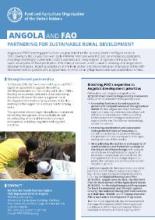Land Library
Welcome to the Land Portal Library. Explore our vast collection of open-access resources (over 74,000) including reports, journal articles, research papers, peer-reviewed publications, legal documents, videos and much more.
/ library resources
Showing items 1 through 9 of 238.Large urban trees are excellent filters for urban pollutants and fine particulates. Trees can provide food, such as fruits, nuts and leaves. Spending time near trees improves physical and mental health by increasing energy level and speed of recovery, while decreasing blood pressure and stress.
Large urban trees are excellent filters for urban pollutants and fine particulates. One tree can absorb up to 150 kg of CO2 per year, sequester carbon and consequently mitigate climate change. Trees provide habitat, food and protection to plants and animals, increasing urban biodiversity.
Haiti enjoys a dynamic partnership with FAO, which has been present in the country since 1978. FAO interventions have focused on food security and nutrition through support to the formulation of agricultural policies and the implementation of development programmes.
Angola and FAO have engaged in close cooperation since the country joined the Organization in
1977. Owing to the 27-year civil war, early FAO interventions were focused on emergency assistance,The integration of food into urban planning is a crucial and emerging topic.
More than 80 percent Canadians live in cities with almost one-quarter of country’s total population living in the Greater Golden Horseshoe (GGH) area. The GGH stretches in a curve around the western side of Lake Ontario with the City of Toronto occupying the northern side of the horseshoe.
Rural-based economic activity can be just as effective for poverty reduction as that of urban sectors. Since the 1990s, rural transformation has lifted nearly as many people out of poverty as urban development.
Geographical indication (GI) schemes can play a special role in promoting sustainable rural development, improving farm income and opening new export potential. Natural factors such as soil, climate and plant varieties play a major role in producing a unique product.
The region of Karamoja, located in the northeast of Uganda, is the poorest and least developed region in the country.









